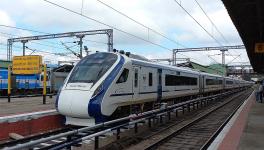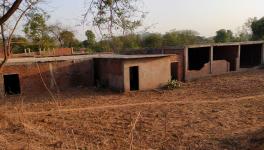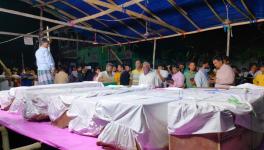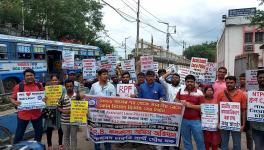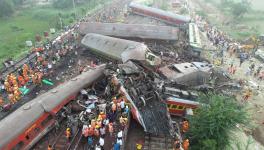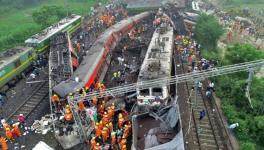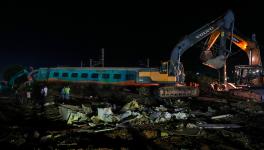Indian Railways: Who is Responsible For Blood on the Tracks?
As the Rs 100 crore engineless trainset rolls out in Chennai, what about investment in safety systems, the lack of which is the prime reason for frequent derailments.
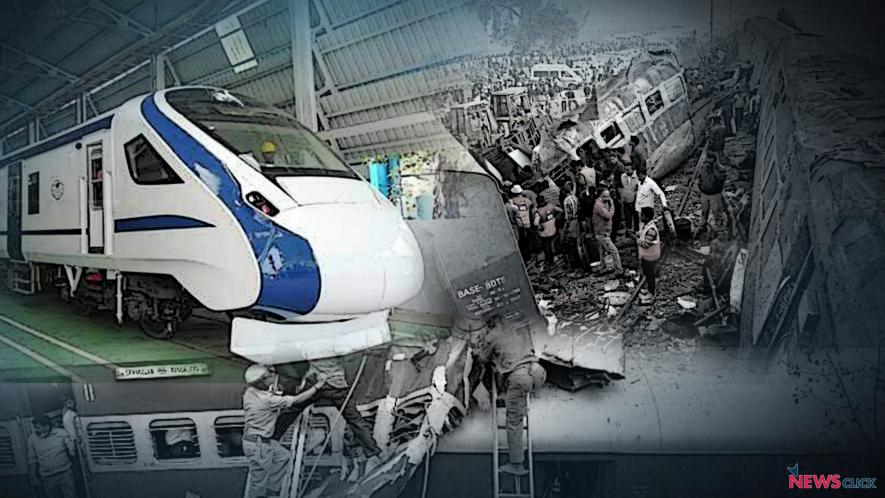
New Delhi: It is the best of times and also worst of times for Indian Railways as the much-awaited first engineless trainset is finally being rolled out from Chennai on Monday for trial amid the gloomy scenario of two back-to-back major accidents exposing the national transporter's safety preparedness and fault lines on rail tracks.
Expected to run at a maximum speed of 160 kmph, the over Rs 100 crore next generation train with 16 coaches, the costliest train on the Indian rail network so far, will be put under trial run for next three months before its commercial operation between New Delhi and Bhopal.
However, the death of about 61 people on the track near Amritsar station on Dussehra (October 19) and the derailment of New Farakka Express near Rae Bareli, claiming the lives of seven passengers on October 10, is a worrisome matter for the Railways as also for scores of commuters who opt for train journey because of its affordability in comparision to the air travel.
The Jalandhar-Amritsar DMU train ran over the crowd gathered to watch the burning of a Ravana effigy, killing at least 61 people and injuring about 100.
However, the Railways has so far publicly maintained that it was not a “rail accident but trespassing on its tracks” and has instead blamed the civic administration for the tragedy.
Notwithstanding the bold front maintained by Indian Railways, it is likely that the heavy casualties could have been avoided had the Railway authorities taken note of the annual Dussehra function near the busy track and had accordingly alerted loco pilots to go slow.
The public transporter has brazened it out with the statement that “information for organising the event was not given to the railways authorities by the civil administration. Furthermore, the land did not belong to railways, therefore no permission for using the site was taken.”
But the question arises whether the Ferozpur Divisonal Railway Manager, responsible for smooth train operation in his area, the Amritsar station authorities and the gatemen of the nearby level crossing were not aware of the Dussehra festival being celebrated at that spot for several years and can wash their hands off from their minimum responsibility.
The two gatemen on duty at the level crossing, gangmen who inspect the tracks, drivers of passing trains, would all have noticed the Ravana effigies being installed over days.
While state administration’s failure is glaring, the Railways cannot shy away from its responsibility even though it has officially maintained that it was an act of trespassing.
The Rae Bareli accident -– where seven passengers were killed after nine coaches of the Malda Town-Delhi New Farakka Express derailed in Uttar Pradesh on October 10 –- has particularly raised questions over the slow pace at which the Indian Railways has been inducting LHB (Linke Hofmann Busch) design coaches.
Out of the nine coaches that derailed at Rae Bareli, two capsized, and as a result, seven passengers lost their lives.
Whether it was because of track defects or signal failure, the exact cause of the derailment would be known only after the inquiry. However, according to senior officials involved in safety, causalities in the New Farakka Express mishap may have been avoided had it been equipped with LHB-design coaches.These modern LHB coaches, as opposed to conventional coaches, are equipped with strong couplers that prevent coaches from capsizing.
Even though the Indian Railways had already decided to stop manufacturing conventional coaches and replace the entire fleet of Mail/Express trains with LHB ones because of its strong safety features, nearly 580 LHB coaches are lying idle.
The problem is that the new LHB coaches cannot be made operational without power cars. The accumulation of LHB coaches without power cars was revealed in a review meeting of the Railway Board recently.
There is a need for about 78 power cars to make these LHB coaches functional as trains. So, in the absence of power cars, these LHB coaches are lying idle, it is learnt.
The tumbling-over or capsizing of conventional coaches in many train derailments had pushed the Railways earlier this year to go for complete elimination of manufacturing of old-designed coaches in Chennai’s Integral Coach Factory (ICF) and opt for modern LHB ones which have strong safety features.
Interestingly, the data prepared by Railways points out that for the first time in 2017-18, accidents recorded in a year were below 100.
Indian Railways has also claimed that the number of ‘consequential train accidents’ declined by 5.1% so far in this fiscal as compared to the same period in the last financial year.
Railway data also showcased the comparison between Congress-led United Progressive Alliance government and the BJP-led National Democratic Alliance by stating that the average number of consequential train accidents was 171.1 per year, whereas the average number of consequential train accidents is 101.3 since 2014.
Besides it has also highlighted its track renewal record with the figure in 2017-18 of 4,405 km and in the current financial year till September a renewal of 2,262 km to prevent rail fracture.
Notwithstanding the data, the fact remains that derailments are happening on regular basis, and on October 10, seven lives were lost due to the mishap.
Besides, the Railways' financial health is also not rosy as at the moment the national transporter has set a record-high operating ratio of 117.31% – which means it spent Rs 117.31 to generate every Rs 100.
The government has already earmarked Rs 20,000 crore a year under the special safety fund for railways to strengthen tracks and for other requirements to prevent accident.
While lakhs of passengers travel daily on trains avoiding costly airfares, derailment of train due to track failure or signal fault put their lives at great risk.
(Arun Kumar Das is Delhi-based journalist and can be contacted at [email protected].)
Get the latest reports & analysis with people's perspective on Protests, movements & deep analytical videos, discussions of the current affairs in your Telegram app. Subscribe to NewsClick's Telegram channel & get Real-Time updates on stories, as they get published on our website.











